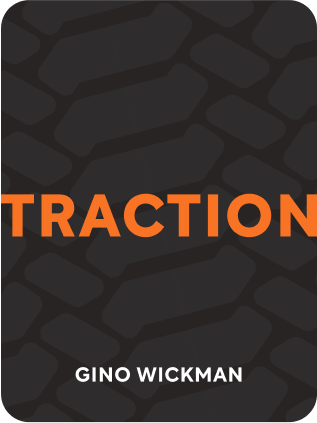

This article is an excerpt from the Shortform book guide to "Traction" by Gino Wickman. Shortform has the world's best summaries and analyses of books you should be reading.
Like this article? Sign up for a free trial here .
What is the EOS management system? How can it help you integrate different components of your business, minimize bottlenecks, and streamline its operations?
The EOS management system is a holistic business management model created by entrepreneurial expert and business consultant Gino Wickman. The EOS management system builds or strengthens six key business components the author discovered while turning around his family’s company.
Read about EOS management and how it can help you take your business to the next level.
The EOS Management System
The EOS management model is a blueprint for business success for first-time entrepreneurs and those who’ve hit a ceiling in their business where hard work and determination are no longer enough for the business to survive and grow.
Business owner and consultant Gino Wickman explains how to structure your business using his Entrepreneurial Operating System to remove typical frustrations, so your business runs seamlessly and grows at a faster rate than you thought possible.
The EOS management system is based on practical experience, not theory. Numerous tools and templates lead business owners step by step through processes to create a structure and focus that strengthens and reenergizes their organizations.
Most entrepreneurs experience one or more of the following frustrations:
- Lack of control: You aren’t controlling your business, it’s controlling you. You’re putting in ever-longer hours yet barely keeping up with what’s happening in your company and market.
- People: You’re frustrated with your partners, employees, vendors, and customers. People don’t seem to hear what you say or follow through with action. No one’s on the same page.
- A growth ceiling: Your business has hit a ceiling that you can’t seem to push through.
- You’re stuck: Your business is spinning its wheels. The strategies and advice you’ve applied haven’t given you the traction to get going again.
Part of the problem is you’ve become so wrapped up in your business you’ve forgotten that it’s separate from you. To reach the next level, you need to build it into a self-sustaining entity, powered by an effective system rather than just your determination.
The EOS Components
Most entrepreneurs get caught up in worrying about countless details. However, every organization or system has a number of key components—and when they’re set up correctly, your business functions smoothly without your constant oversight.
The six key elements of any business or organization are:
1) Vision: You need a compelling vision for your business that you communicate clearly so everyone can focus their energy on it and help you achieve it.
This book explains how to define your vision, which capsulizes who you are as an organization, where you’re going, and how you’ll get there. You develop a vision by identifying your “sweet spot,” the area where you excel; defining a marketing strategy; and setting one-, three-, and 10-year goals.
2) People: You need to have the right people in the right positions. People who are wrong for your company, or are in the wrong positions, hurt your business. A tool introduced in Chapter 4 helps you identify the right people, those who share your core values. Another tool (GWC) helps you put people in the right jobs by assessing whether they “get,” want, and are capable of the job.
You also need the right organizational structure. The Accountability Chart helps you create a structure defining and clarifying your business functions, roles, and responsibilities.
3) Data: By creating a “Scorecard” or weekly report on a few key numbers, you can regularly check the vital signs of your business, quickly see and solve problems, and predict the future—without waiting for financial statements. You can also give each person a metric or number she’s accountable for.
4) Issues: You need to systematically identify and address issues before they undermine your business. To do this, maintain and regularly review an issues list (covered in Chapter 6). When you take the time to solve a problem, you’ll save up to 10 times that amount of time dealing with the problem or its consequences later.
5) Process: Your processes are the way you do business. You need to identify, address, and document each of your core processes, and continually improve them. Many entrepreneurs don’t fully appreciate the value of having the right processes—however, sound processes create efficiency and make your business scalable and more profitable.
6) Traction: Traction—the ability to execute, or make the company’s vision a reality—requires two things: 1) 90-day priorities for everyone, and 2) regular, focused, productive meetings at every level.
These six components make up the EOS management system. In any given area, most businesses are less than 50% effective. Achieving 80% effectiveness in every area will create a smoothly functioning, effective operation. The myriad details that used to consume you will take care of themselves.

———End of Preview———
Like what you just read? Read the rest of the world's best book summary and analysis of Gino Wickman's "Traction" at Shortform .
Here's what you'll find in our full Traction summary :
- How a first-time entrepreneur can gain the traction needed to grow
- Why hard work and determination aren't enough for your business to succeed
- The 6 key principles of the Entrepreneurial Operating System






